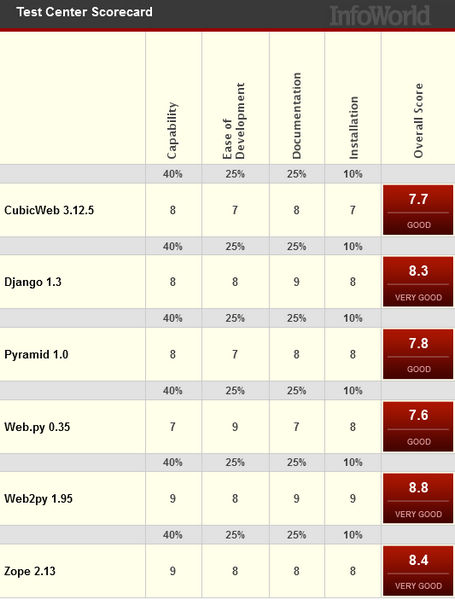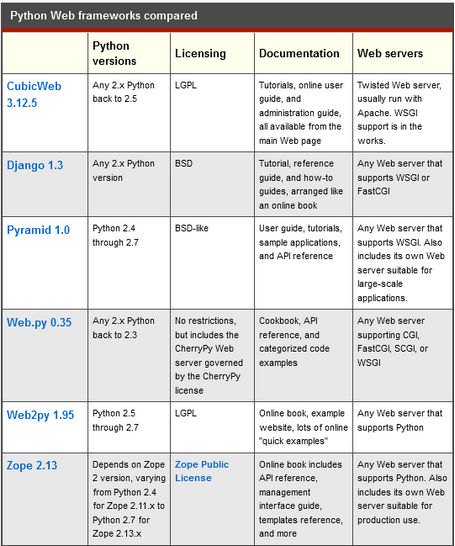Home >Backend Development >Python Tutorial >Comparison of Python's six major frameworks, Web2py is slightly better
Comparison of Python's six major frameworks, Web2py is slightly better
- 高洛峰Original
- 2016-10-17 14:02:151670browse
Python is a dynamic, object-oriented language. It was originally designed as an object-oriented language, and some more advanced features were added later. In addition to the design purpose of the language itself, the Python standard library is also worthy of praise. Python even comes with its own server. In other aspects, Python has enough free data function libraries, free web page template systems, and libraries for interacting with web servers, which can be designed into your web applications.

In this article, we will review the 6 major Python-based web application frameworks for Python web developers. Whether you do it out of hobby or need, these six frameworks may become a good assistant in your work.
1.Zope2
Zope 2 is a Python-based Web application framework, the originator of all Python Web applications and tools, and a powerful branch of the Python family. Zope 2's "object publishing" system is ideal for object-oriented development methods and can reduce the developer's learning curve and help you discover some bad features in your application.
Download address: http://zope2.zope.org/releases
2.Web2py
Web2py is a free open source Web framework written in Python language. It is designed to develop Web applications agilely and quickly, with fast and reliable Scalable, secure and portable database-driven applications, open source under the LGPLv3 license.
Web2py provides a one-stop solution. The entire development process can be carried out on the browser. It provides the functions of online development of the Web version, HTML template writing, static file uploading, and database writing. Others include logging functions and an automated admin interface.
Download address: http://web2py.com/examples/default/download
3.Web.py
Web.py is a lightweight open source Python Web framework, small, flexible, simple and very powerful. There are no restrictions on use. Web.py is currently widely used in many large websites, such as Spanish social networking site Frinki, Yandex, which has an average daily homepage of 70 million visits, etc.
Installation address: http://webpy.org/install
4.Pyramid
Pyramid is also a lightweight open source Python Web framework and is part of the Pylons project. Pyramid can only run on Python 2.x or 2.4 or later. There is no need to declare when using a back-end database, and no specific template system is forced to be used during development.
Download address: http://www.pylonsproject.org/projects/pyramid/download
5.Django
Django is an open source Web framework and adopts the MVC design pattern. It is a very widely used Python web framework that contains many very useful libraries to speed up web development.
Download address: https://www.djangoproject.com/download/
6. CubicWeb
CubicWeb promotes itself as not only a Web development framework, but also a semantic Web development framework. CubicWeb uses RQL Relation Query Language to communicate with the database.
Download address: http://docs.cubicweb.org/admin/setup
The following infographics are evaluation charts and infographics of the six frameworks.
The evaluation results of the six major frameworks are as follows:

The function comparison of the six major frameworks is as follows:



